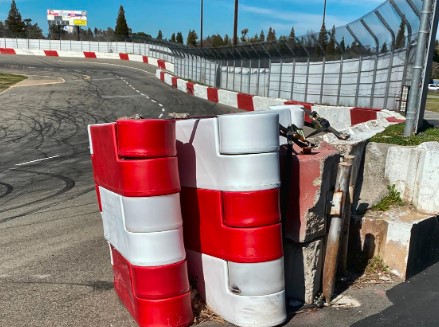
Track Barrier Technology: Enhancing Safety in Motorsports
The world of motorsports is an exhilarating realm of speed, skill, and competition that captivates fans worldwide. However, with the excitement and adrenaline come inherent risks that necessitate continuous advancements in safety technology. Track barrier technology plays a pivotal role in enhancing safety measures at racing venues like the iconic Winchester Speedway, where the pursuit of speed meets the imperative for safety. In this in-depth article, we’ll explore the evolution of track barrier technology, its significance in motorsports safety, and its impact on the future of racing.

The Importance of Safety in Motorsports
Safety is paramount in motorsports, where high-speed collisions and accidents can result in severe injuries or fatalities. As the popularity of racing continues to grow, so does the need for innovative safety solutions that protect drivers, crew members, and spectators alike.
The Evolution of Track Barriers
Over the years, track barriers have undergone significant advancements to improve safety standards and mitigate the risks associated with racing accidents. From rudimentary hay bales and wooden barriers to modern, state-of-the-art safety systems, the evolution of track barriers reflects a commitment to enhancing safety in motorsports.
Types of Track Barrier Technologies
Several types of track barrier technologies are employed in modern racing venues to absorb impact energy and protect occupants during accidents. Some of the most common types include:
- Steel Guardrails: Traditional steel guardrails are designed to redirect vehicles and absorb impact energy, reducing the force of collisions.
- Concrete Walls: Concrete walls provide robust protection against high-speed impacts but can be unforgiving in certain situations.
- SAFER Barriers: Steel and foam energy reduction (SAFER) barriers combine steel tubes with energy-absorbing foam to reduce the severity of impacts and protect drivers from serious injuries.
- Tire Barriers: Tire barriers use stacks of tires to absorb energy and cushion impacts, offering a flexible and effective safety solution for various racing environments.
The Significance of Track Barrier Technology
Track barrier technology plays a crucial role in enhancing safety standards in motorsports by providing robust protection against high-speed collisions and accidents.
Absorbing Impact Energy
One of the primary functions of track barriers is to absorb and dissipate the kinetic energy generated during collisions, reducing the force exerted on vehicles and occupants. By absorbing impact energy, track barriers help minimize the risk of injuries and fatalities in racing accidents.
Enhancing Crashworthiness
Modern track barriers are designed with crashworthiness in mind, incorporating materials and structures that can withstand high-velocity impacts without compromising integrity. This focus on crashworthiness ensures that barriers remain effective in protecting drivers and spectators during accidents.
Improving Track Layout and Design
Advancements in track barrier technology have also influenced track layout and design, with race organizers incorporating safer configurations and positioning barriers strategically to minimize risks. By optimizing track design, organizers can create safer racing environments that prioritize participant safety without sacrificing the thrill of competition.
Innovations in Track Barrier Technology
As technology continues to advance, so too does the potential for innovation in track barrier technology.
SMART Barriers
Sensor-equipped, modular, and responsive track barriers, known as SMART barriers, represent the next frontier in safety innovation. These intelligent barriers can detect impacts in real-time and adjust their stiffness or position to optimize energy absorption and protect against secondary impacts.
Flexible Barrier Systems
Flexible barrier systems, such as SAFER barriers and tire barriers, offer enhanced flexibility and adaptability to varying track conditions and racing environments. These systems can be easily installed, removed, or reconfigured to accommodate different race layouts and safety requirements.
Sustainable Materials
The use of sustainable materials in track barrier construction is gaining traction as environmental considerations become increasingly important. By utilizing recycled materials and eco-friendly alternatives, track barrier manufacturers can reduce their environmental footprint while maintaining high safety standards.
The Future of Track Barrier Technology
Looking ahead, the future of track barrier technology is promising, with continued advancements expected to further improve safety standards in motorsports.
Integrated Safety Systems
The integration of track barrier systems with other safety technologies, such as onboard sensors, driver aids, and communication systems, holds significant potential for enhancing overall safety in motorsports. These integrated systems can provide real-time feedback and alerts to drivers and race officials, enabling proactive safety measures and rapid response to emergencies.
Virtual Simulation and Testing
Virtual simulation and testing technologies offer a cost-effective and efficient means of evaluating track barrier performance under various conditions. By simulating different scenarios and analyzing data in virtual environments, engineers can refine designs. They can optimize safety features without the need for extensive physical testing.
Global Safety Standards
The establishment of global safety standards and guidelines for track barrier technology can help ensure consistency and uniformity in safety practices across different racing organizations and venues. By adopting standardized safety protocols, the motorsports community can collaborate more effectively to promote a culture of safety and responsibility.
Conclusion
Track barrier technology continues to play a vital role in enhancing safety standards and mitigating risks in motorsports. From traditional guardrails and concrete walls to advanced SMART barriers and flexible barrier systems. The evolution of track barriers reflects a commitment to innovation and excellence in safety engineering. Racing venues like the Winchester Speedway continue to host thrilling events. With them, the importance of investing in cutting-edge track barrier technology cannot be overstated. By embracing innovation, adhering to global safety standards, and prioritizing participant safety. The motorsports community can ensure a safer and more sustainable future. All for the exciting world of racing.
